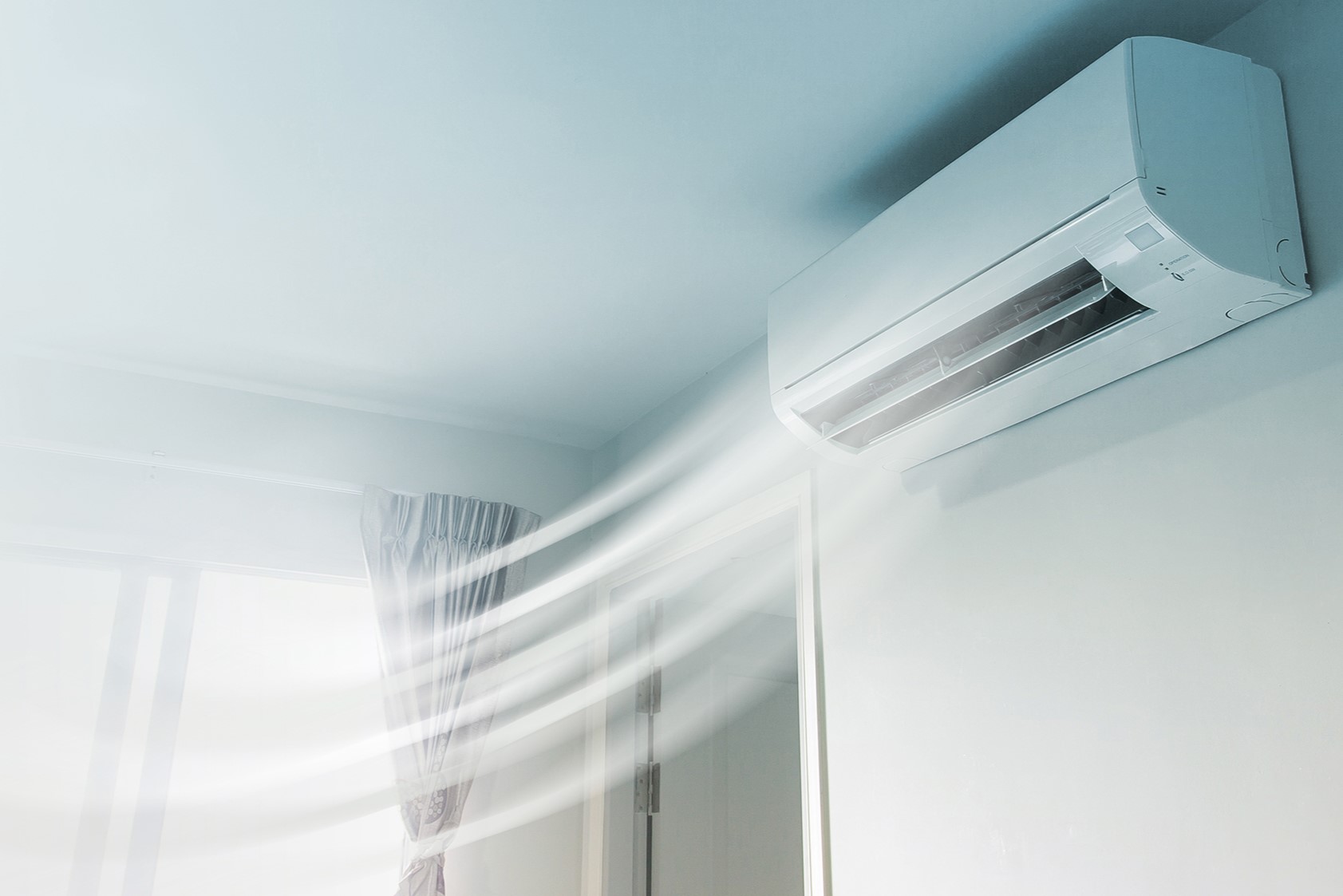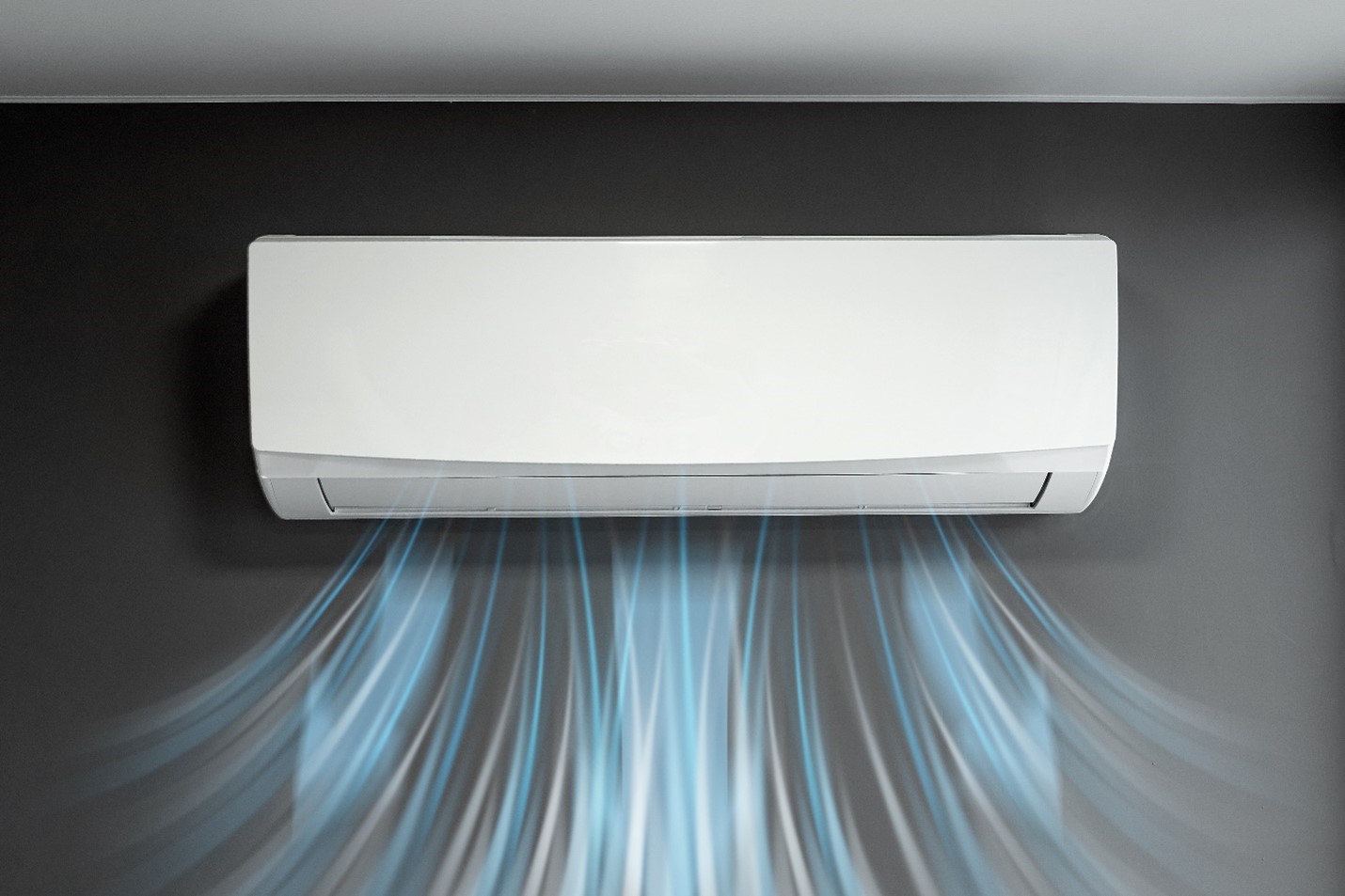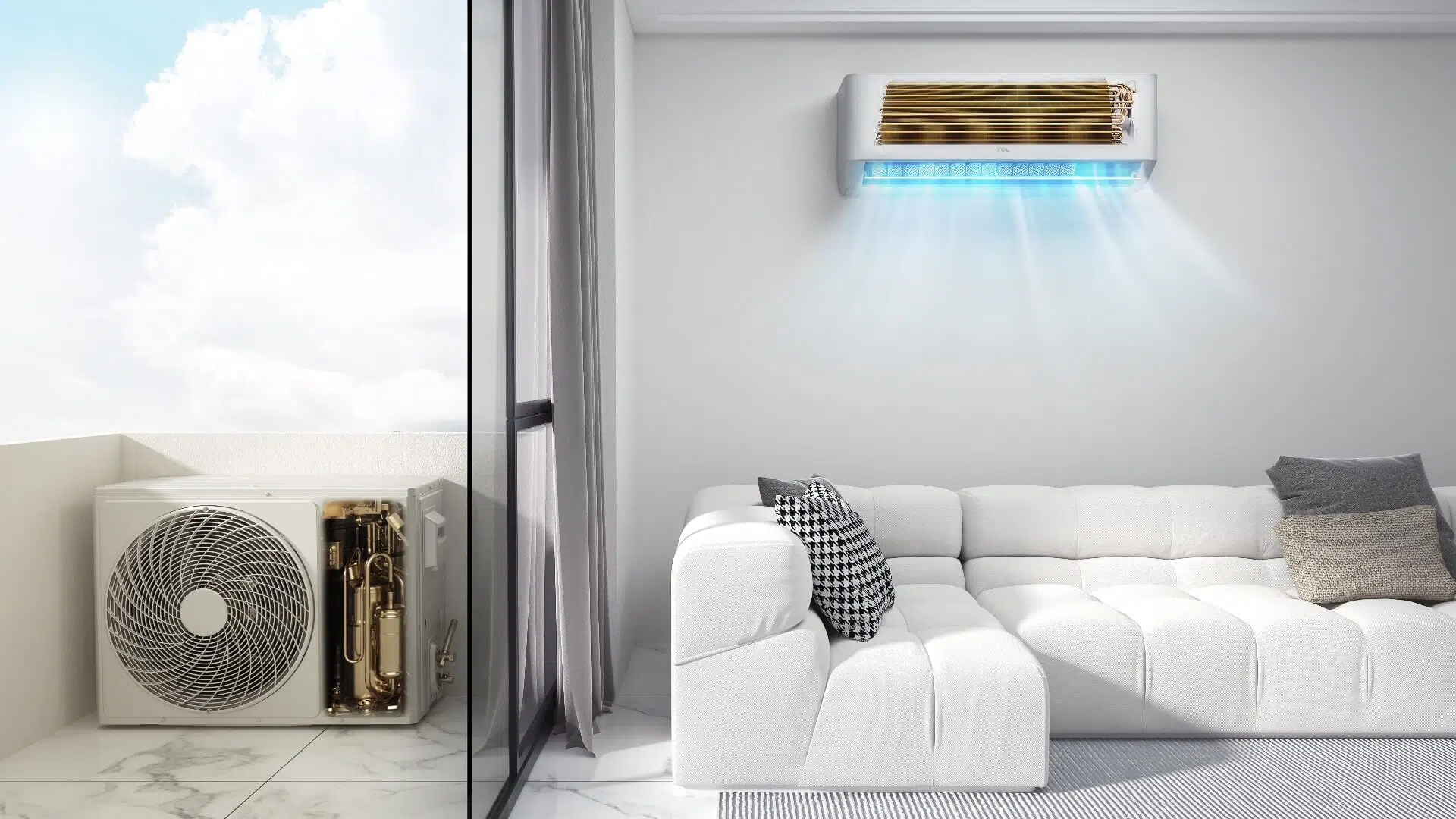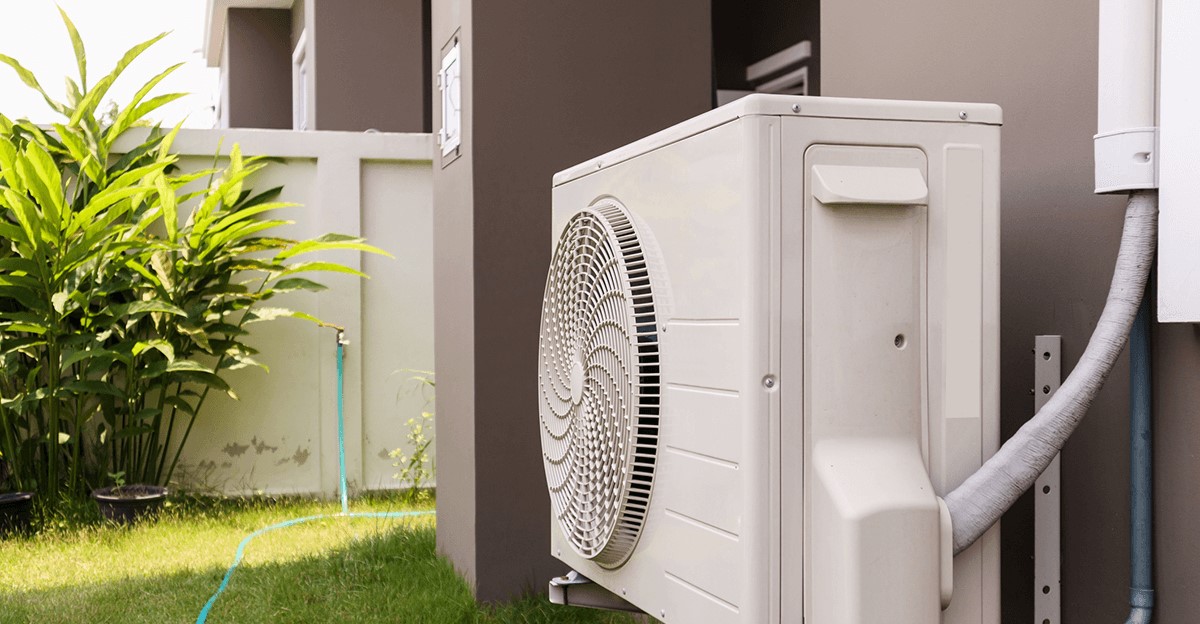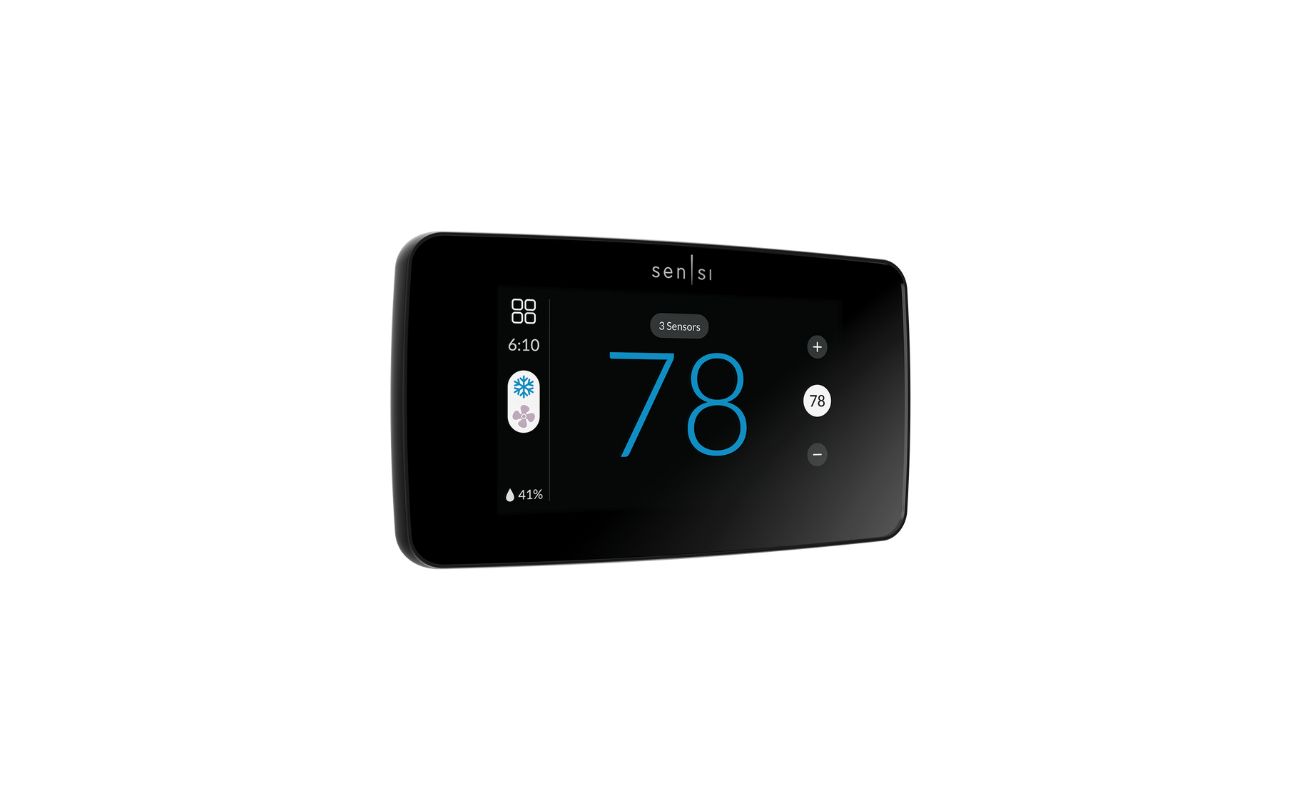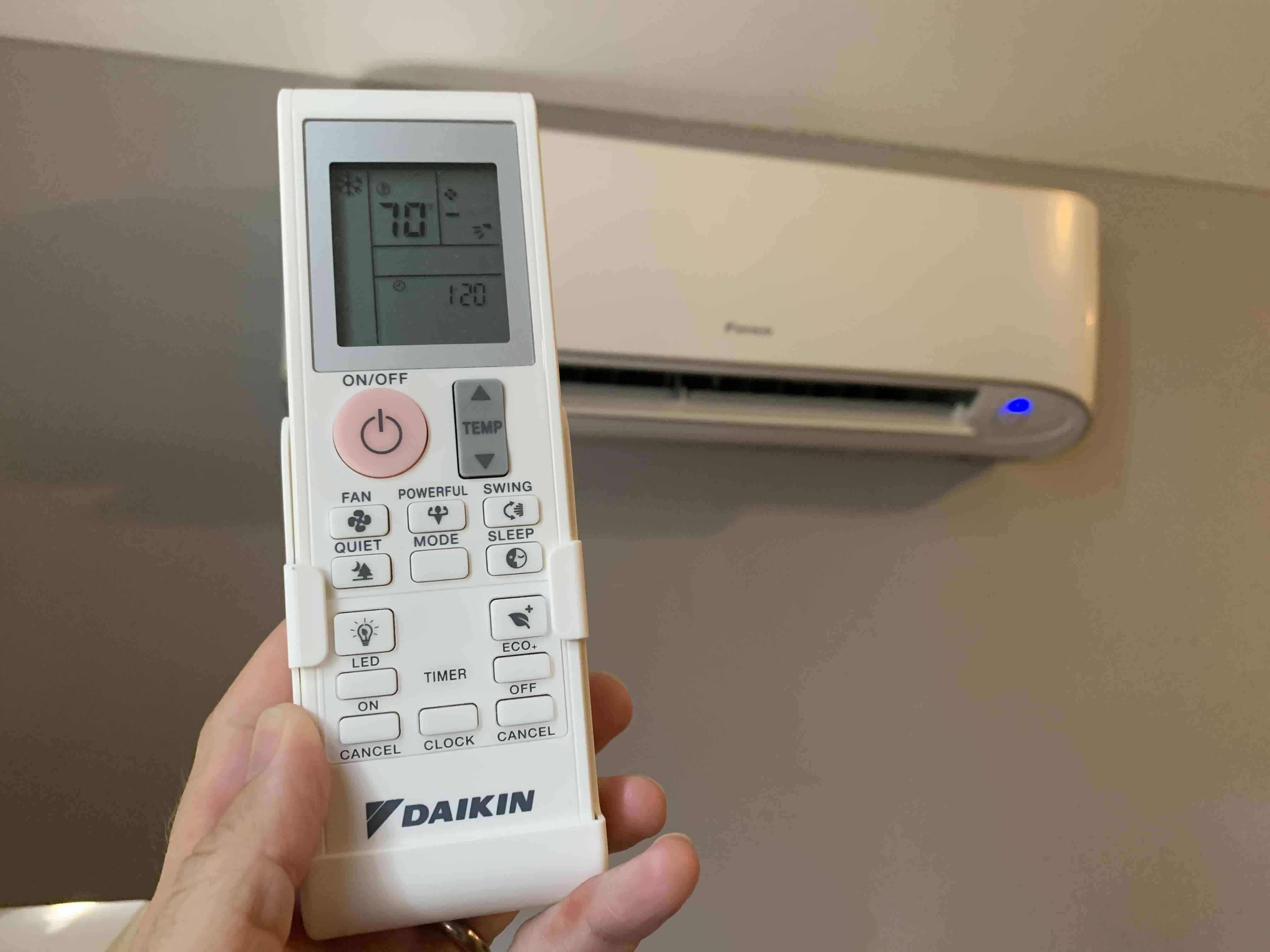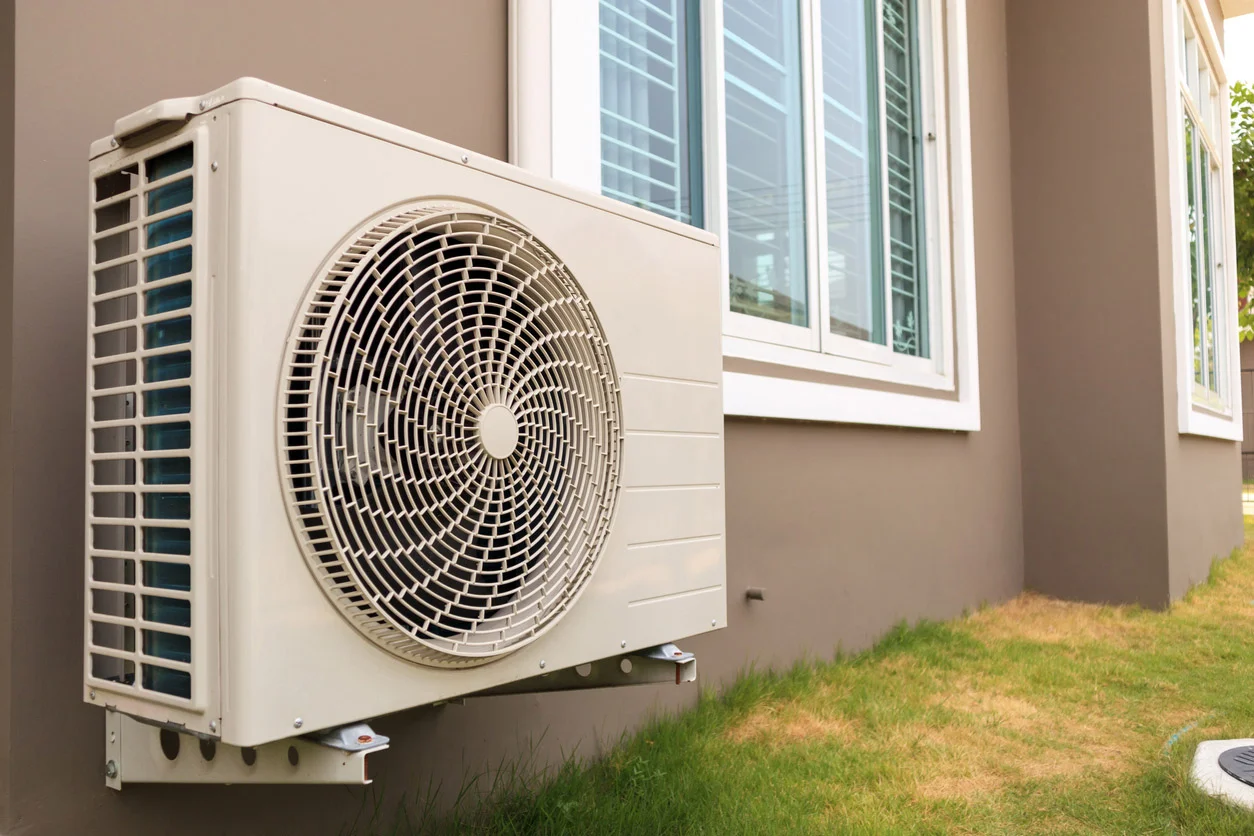Home>Home Maintenance>What Does Sleep Mode Do On An Air Conditioner
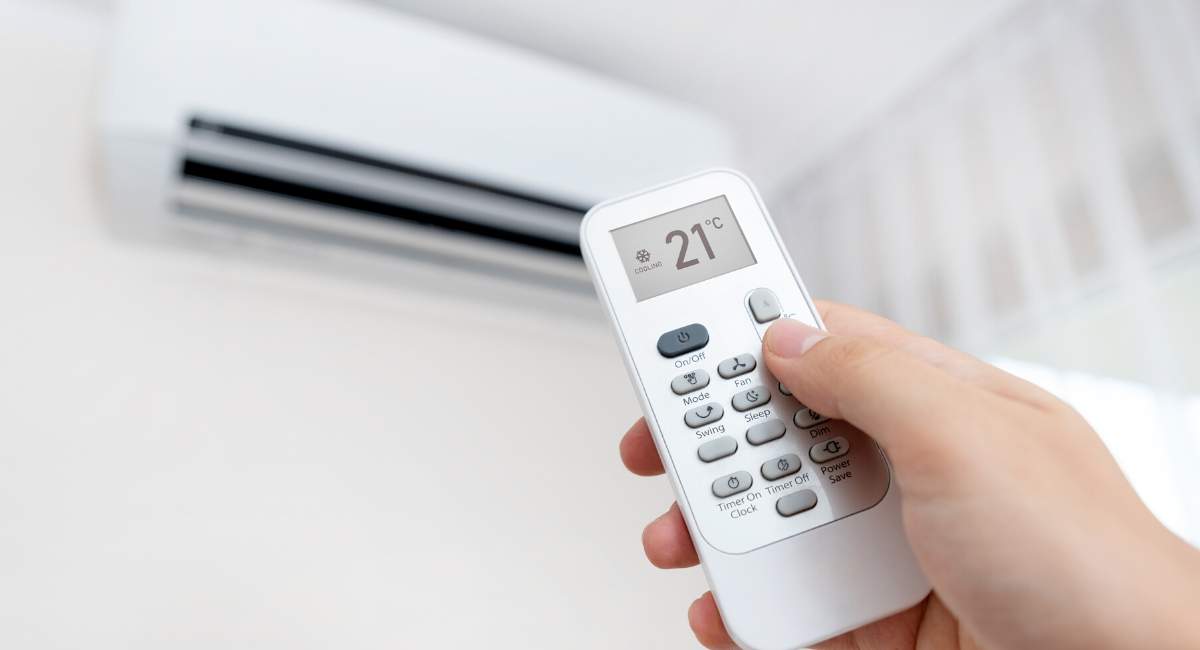

Home Maintenance
What Does Sleep Mode Do On An Air Conditioner
Modified: March 7, 2024
Learn about the benefits of sleep mode on your air conditioner for home maintenance. Save energy and enjoy a comfortable indoor environment.
(Many of the links in this article redirect to a specific reviewed product. Your purchase of these products through affiliate links helps to generate commission for Storables.com, at no extra cost. Learn more)
Introduction
Sleep mode is a commonly found feature on air conditioners that aims to optimize energy efficiency while providing a comfortable indoor environment. It’s a valuable function that can help homeowners reduce energy consumption and save on utility bills, especially during periods of inactivity or when they are asleep.
In this article, we will explore the ins and outs of sleep mode on air conditioners. We’ll examine how it works, the energy-saving features it offers, and the benefits and potential drawbacks of using this mode. Additionally, we’ll provide some tips on how to use sleep mode effectively to maximize its efficiency and comfort.
So, let’s dive into the world of sleep mode and discover how it can help you achieve better control over your air conditioner’s performance while conserving energy and maintaining a cozy indoor environment.
Key Takeaways:
- Sleep mode on air conditioners helps save energy and create a cozy sleep environment by adjusting temperature and fan speed, mimicking natural cooling patterns.
- By using sleep mode effectively and combining it with programmable timers, you can enjoy better sleep, lower energy bills, and contribute to a more eco-friendly home.
Read more: What Is Sleep Mode On An Air Conditioner
How Sleep Mode Works
Sleep mode on an air conditioner is designed to automatically adjust the temperature, fan speed, and other settings to create a more comfortable and energy-efficient environment during periods of inactivity. The primary goal of sleep mode is to mimic the natural temperature variations that occur when we sleep, providing a more restful and comfortable experience.
When activated, the air conditioner’s sleep mode operates on a pre-set temperature and fan speed. Typically, the temperature is set slightly higher than your usual comfort level, allowing the air conditioner to cycle on and off less frequently. The fan speed may also be adjusted to a lower setting to reduce noise levels.
As nighttime approaches, the air conditioner gradually adjusts the temperature to a slightly lower level to ensure a cool and comfortable sleep. This slows down the cooling process, allowing the air conditioner to conserve energy while maintaining a pleasant temperature. This temperature adjustment is often accompanied by a reduction in the fan speed, creating a gentle and quiet airflow.
Additionally, some advanced air conditioner models also feature intelligent sensors that detect ambient temperature and humidity levels. These sensors automatically adjust the settings in sleep mode based on the environmental conditions, further optimizing energy efficiency and comfort.
It is important to note that each air conditioner brand and model may have slight variations in how sleep mode operates. Therefore, it’s recommended to refer to the manufacturer’s manual for specific instructions on how to activate and customize sleep mode settings on your particular air conditioner.
Energy Saving Features
Sleep mode on an air conditioner is not just about adjusting the temperature and fan speed. It also incorporates several energy-saving features that help reduce power consumption without compromising comfort. Here are some common energy-saving features found in sleep mode:
- Temperature setback: In sleep mode, the air conditioner gradually increases the set temperature to save energy. This prevents the unit from overworking and cycling on and off frequently, resulting in more efficient cooling and reduced electricity usage.
- Smart sensors: Some air conditioners are equipped with intelligent sensors that detect the activity and occupancy levels of a room. These sensors can adjust the cooling output based on the number of people present, optimizing energy consumption and comfort.
- Adaptive control: Advanced air conditioners with adaptive control technology can learn the cooling patterns and preferences of the users. This allows the unit to automatically adjust the temperature and fan speed in sleep mode based on previous usage, ensuring energy efficiency and personalized comfort.
- Timer presets: Many air conditioners have programmable timers that allow users to set specific time intervals in sleep mode. This enables the unit to automatically turn on or off at predetermined times, saving energy by avoiding unnecessary cooling when the room is unoccupied.
- Eco-friendly refrigerants: Some air conditioner models utilize eco-friendly refrigerants that are less harmful to the environment and have a lower impact on global warming potential. Using these refrigerants contributes to energy efficiency and sustainability.
By utilizing these energy-saving features in sleep mode, you can significantly reduce your air conditioner’s energy consumption without sacrificing comfort. This not only helps to lower your electricity bills but also contributes to a more eco-friendly home.
Temperature and Fan Control
Sleep mode on an air conditioner provides users with control over both the temperature and fan settings. By adjusting these parameters, you can create a comfortable sleeping environment while conserving energy. Here’s how temperature and fan control work in sleep mode:
Temperature Control:
In sleep mode, the air conditioner sets a slightly higher temperature than your usual comfort level. This temperature setback allows the unit to cycle on and off less frequently, reducing energy consumption. As nighttime approaches, the air conditioner gradually adjusts the temperature to a lower level to ensure a cool and comfortable sleep. This temperature adjustment mimics the natural decrease in body temperature during sleep, promoting a more restful rest.
Fan Control:
Along with temperature control, sleep mode also adjusts the fan speed. The fan speed is often set to a lower setting, creating a gentle and quiet airflow. This lower fan speed helps to reduce noise levels and promotes a more peaceful sleep environment.
Some air conditioner models offer multiple fan speed options, allowing you to choose the level that suits your preferences. Additionally, advanced air conditioners may have a “Quiet” mode specifically designed for sleep, which further minimizes noise and airflow disturbance.
It’s important to note that individual preferences for temperature and airflow may vary. If the default settings in sleep mode do not provide the desired comfort, some air conditioners allow users to customize the temperature and fan speed within a certain range. Refer to your air conditioner’s manual for instructions on how to adjust these settings.
By having control over the temperature and fan settings in sleep mode, you can create an optimal sleeping environment that promotes comfort while effectively managing energy consumption.
Programmable Timers
Programmable timers are a convenient feature available on many air conditioners, including those with sleep mode. These timers allow you to schedule the operation of your air conditioner, ensuring it turns on or off automatically at specific times. This feature not only adds convenience but also helps save energy. Here’s how programmable timers work:
Setting the Timer:
With programmable timers, you can set the desired start and stop times for your air conditioner’s operation. For sleep mode, you can program the unit to turn on before bedtime to ensure a comfortable sleeping environment and then turn off or switch to a lower power mode during the day when the room is less occupied.
Energy Savings:
By using a programmable timer, you can take advantage of off-peak electricity periods or adjust the air conditioner’s operation to coincide with your daily routine. This helps to reduce energy consumption by avoiding unnecessary cooling when the room is empty or when temperatures are generally cooler.
For example, if you have a consistent work schedule, you can program the air conditioner to turn off during the day while you’re at work and then resume its normal cooling operation a short while before you arrive home. This helps to conserve energy and saves on utility bills without compromising comfort.
Creativity and Flexibility:
Programmable timers offer flexibility, allowing you to customize the schedule of your air conditioner’s operation based on your unique needs and preferences. You can experiment with different timing patterns to find the most efficient and comfortable setting for your specific situation.
For instance, if you live in an area with cooler nights, you can set the air conditioner to turn off completely during the night hours and rely on natural ventilation to keep the room cool. Alternatively, you can adjust the timer to gradually increase the temperature during the night to conserve energy while maintaining a comfortable sleeping environment.
Programmable timers provide an effective way to manage your air conditioner’s operation and save energy. By utilizing this feature in combination with sleep mode, you can improve the overall efficiency and performance of your air conditioner while ensuring optimal comfort throughout the day.
Using the sleep mode on your air conditioner can help save energy and money by gradually adjusting the temperature while you sleep, leading to a more comfortable and efficient cooling experience.
Read more: What Does Eco Mode Do On An Air Conditioner
Benefits of Using Sleep Mode
Sleep mode on an air conditioner offers several benefits that can enhance both comfort and energy efficiency. By utilizing this feature, you can enjoy a more restful sleep while saving on energy consumption. Let’s explore the advantages of using sleep mode:
- Energy Savings: One of the primary benefits of sleep mode is its ability to reduce energy consumption. By adjusting the temperature and fan speed, sleep mode ensures that your air conditioner runs more efficiently during periods of inactivity or sleep. This not only helps to lower your utility bills but also contributes to a more sustainable and eco-friendly home.
- Comfortable Sleeping Environment: Sleep mode is specifically designed to create a comfortable sleeping environment. With gradual temperature adjustments and lower fan speeds, it mimics the natural cooling patterns our bodies experience during sleep. This promotes better rest and can help improve the quality of your sleep.
- Noise Reduction: The lower fan speeds in sleep mode contribute to a quieter operation, reducing noise levels in your bedroom. This can be especially beneficial for light sleepers who are sensitive to noise disruptions during the night.
- Customizability: Depending on your air conditioner model, sleep mode may offer customization options to adjust the temperature and fan speed based on your preferences. This allows you to tailor the setting to your personal comfort requirements, ensuring an optimal sleeping environment.
- Convenience of Programmable Timers: When sleep mode is combined with programmable timers, you can schedule the air conditioner’s operation to align with your daily routine. This provides convenience and energy savings by turning on or off the unit automatically at specific times.
- Extended Lifespan: By reducing the workload and cycling frequency of your air conditioner, sleep mode can help extend the lifespan of the unit. The optimized operation and reduced stress on the components can contribute to a longer-lasting and more reliable air conditioning system.
Overall, using sleep mode on your air conditioner offers numerous benefits that enhance your sleep quality, comfort, and energy efficiency. Take advantage of this feature to create the ideal sleeping environment while maintaining control over your energy consumption.
Potential Drawbacks of Sleep Mode
While sleep mode on air conditioners offers many advantages, it’s important to be aware of a few potential drawbacks. These disadvantages may vary depending on the specific model and settings of your air conditioner. Here are some potential drawbacks to consider:
- Temperature Fluctuations: The temperature adjustments in sleep mode can result in slight temperature fluctuations throughout the night. Some individuals may find this uncomfortable, especially if they are sensitive to variations in room temperature while asleep.
- Noise Levels: While sleep mode usually reduces the fan speed to minimize noise, some air conditioners may still produce a noticeable sound that could disturb light sleepers. It’s important to consider the noise levels of your particular air conditioner model before relying on sleep mode.
- Maintenance: Depending on the air conditioner brand and model, sleep mode may require periodic maintenance and cleaning to ensure its optimal performance. This includes regular filter cleaning or replacement to prevent airflow obstruction and maintain energy efficiency.
- Customization Limitations: Not all air conditioner models allow extensive customization of temperature and fan speed in sleep mode. This can limit your ability to fine-tune the settings according to your individual preferences and comfort requirements.
- Compatibility: Sleep mode may not be compatible with certain air conditioner types or older models. It’s recommended to consult the manufacturer’s manual or seek professional advice to ensure the compatibility and functionality of sleep mode on your specific air conditioner.
- Learning Curve: Understanding how to properly activate and adjust sleep mode settings on your air conditioner may require some initial learning. Familiarize yourself with the user manual or consult with a professional to make the most out of this feature.
While these potential drawbacks should be taken into consideration, for most users, the benefits of sleep mode significantly outweigh any minor inconveniences. It’s essential to assess your individual needs and prioritize what is most important to you when determining whether sleep mode is suitable for your air conditioning usage.
Tips for Using Sleep Mode Effectively
To ensure that you get the most out of the sleep mode feature on your air conditioner, here are some tips to use it effectively:
- Understand the Settings: Familiarize yourself with the specific sleep mode settings and features available on your air conditioner. Refer to the user manual or consult with the manufacturer to learn how to activate and customize sleep mode for your comfort and energy-saving needs.
- Experiment with Temperature: Adjust the temperature settings in sleep mode to determine the optimal level for your comfort. Start with the default setting, and if necessary, make slight adjustments until you find the temperature that promotes a restful sleep without causing discomfort.
- Consider Fan Speed: Experiment with different fan speed settings to find the most suitable option for optimal airflow and noise reduction. Lower fan speeds can help create a quieter sleeping environment, while higher speeds may provide better circulation and cooling if preferred.
- Utilize Programmable Timers: Take advantage of programmable timers to align your air conditioner’s operation with your daily routine. Set the timer to turn on or off at specific times to maximize energy efficiency while ensuring a comfortable sleep environment.
- Maintain Regular Maintenance: Keep up with routine maintenance, such as cleaning or replacing filters, to ensure optimal performance in sleep mode. Regular maintenance prevents airflow obstruction and helps maintain energy efficiency, contributing to improved overall performance.
- Combine Sleep Mode with Natural Ventilation: On cooler nights, consider utilizing natural ventilation in conjunction with sleep mode. Open windows or use fans to facilitate fresh airflow into the room, reducing the reliance on the air conditioner during sleep hours, and conserving energy.
- Monitor Energy Consumption: Observe your energy consumption and utility bills to assess the effectiveness of sleep mode in reducing energy usage. If necessary, make adjustments to the settings or usage patterns to further optimize energy efficiency.
- Take Advantage of Smart Features: If your air conditioner has smart features or connectivity options, explore their capabilities to enhance the performance of sleep mode. Smart sensors or voice control integration can provide added convenience and efficiency.
By following these tips, you can maximize the benefits of sleep mode on your air conditioner. It’s important to remember that every individual and situation is different, so feel free to experiment and adjust the settings according to your specific needs and preferences.
Conclusion
Sleep mode on air conditioners offers numerous benefits, including energy savings, improved comfort, and convenience. By understanding how sleep mode works and utilizing its energy-saving features effectively, you can optimize your air conditioner’s performance while minimizing power consumption and utility bills.
The gradual temperature adjustments and lower fan speed in sleep mode create a more comfortable sleep environment, mirroring the body’s natural cooling patterns during rest. This promotes better sleep quality and a more restful experience throughout the night.
Programmable timers add an extra layer of convenience, allowing you to schedule the air conditioner’s operation according to your daily routine. This not only enhances energy efficiency but also ensures a comfortable environment when you need it the most.
It’s important to be aware of potential drawbacks, such as temperature fluctuations or noise levels, and consider your specific needs and preferences when utilizing sleep mode. Customize the settings, experiment with temperature and fan speed adjustments, and maintain regular maintenance to optimize the performance of sleep mode.
Remember to monitor your energy consumption and assess the effectiveness of sleep mode in reducing energy usage. Making adjustments and taking advantage of smart features can further enhance the overall efficiency and performance of sleep mode.
In conclusion, sleep mode is a valuable feature that can significantly improve your air conditioner’s efficiency while providing a comfortable sleeping environment. By using sleep mode effectively, you can enjoy restful nights, save on energy costs, and contribute to a more sustainable lifestyle.
Frequently Asked Questions about What Does Sleep Mode Do On An Air Conditioner
Was this page helpful?
At Storables.com, we guarantee accurate and reliable information. Our content, validated by Expert Board Contributors, is crafted following stringent Editorial Policies. We're committed to providing you with well-researched, expert-backed insights for all your informational needs.

